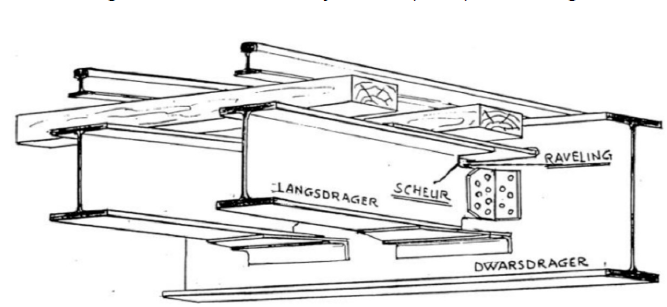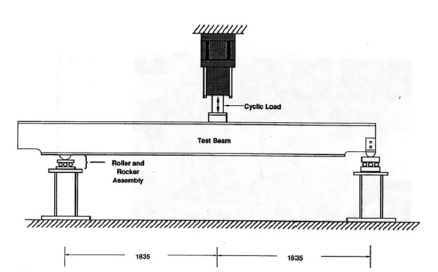
Graduation project - Fatigue of Coped Beams in Rail Bridges
The graduation project involves the development of a crack growth model for realistic load conditions in rail bridges.
Many existing rail bridges contain steel beams that support the rails. These beams are coped at the junction with the crossbeams (in Dutch: raveling), see Fig. 1. The copes appear sensitive to fatigue crack initiation due to large numbers of heavy trains (load) and a high stress concentration at the cope radius (resistance).

Fig. 1. Coped beams in rail bridges
A previous graduation student has developed an XFEM crack simulation model for coped beams. The model is validated with simple experiments found in literature (Figs. 2 and 3). The actual load condition in a rail bridge - with axles crossing the bridge with realistic connections – is different from that in the experiments.

Fig. 2. XFEM crack simulation model developed previously

Fig. 3. Experimental set-up for crack growth in coped beams.
The graduation subject involves the development of a crack growth model for realistic load conditions in rail bridges. The existing model functions as the basis of the study and it should be incorporated in a larger model of a bridge. Some exemplary rail bridges will be selected in consultation with ProRail for this purpose. The outcomes of the model(s) should be generalized such, that a crack growth prediction can be given for any bridge based on it characteristics. ProRail will use the outcomes of the study for setting the fatigue inspection interval.